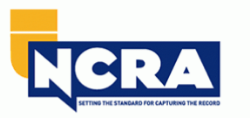Trial Presentation Assisting Attorneys Showcase Evidence with Clarity
Trial Presentation Assisting Attorneys Showcase Evidence with Clarity
Blog Article
Astound the Court: Necessary Elements of a Powerful Test Discussion
Important components such as comprehending the audience, crafting a compelling story, and mastering verbal and non-verbal interaction are essential parts of an efficient discussion. As these elements link, they create a cohesive method that not only educates yet additionally engages jurors on several degrees.

Understanding Your Audience
Comprehending your audience is an essential facet of reliable trial discussion. An effective presentation depends upon the capability to realize the demographics, worths, and proneness of jurors. This comprehension educates how arguments are framed, evidence exists, and emotional allures are crafted, making certain that the message reverberates with the jurors on an individual level.
Research study indicates that jurors come from varied histories and might have varying degrees of understanding relating to legal proceedings. Additionally, comprehending the jurors' possible predispositions and life experiences enables the trial presenter to anticipate arguments and address concerns proactively.
Reliable test presentation likewise includes observing jurors' reactions throughout the proceedings. Engaging with jurors as people instead than a cumulative device is vital in cultivating a solid link in the courtroom.

Crafting an Engaging Story
Crafting an engaging narrative is essential in assisting jurors via the intricacies of a situation. A well-structured narrative not just simplifies detailed legal concepts but also involves jurors on an emotional level, making the information much more relatable and memorable.
This message needs to resonate with the jurors' worths and experiences, promoting a connection that goes beyond mere realities. This chronological technique can help jurors follow the progression of occasions, highlighting cause and effect.
Incorporating human aspects-- such as personal stories or narratives-- can better enhance the narrative's impact. These aspects evoke empathy, enabling jurors to picture the consequences of the instance on real lives. In addition, utilizing a consistent style throughout the presentation enhances the main debate, making it easier for jurors to maintain crucial factors.
Ultimately, a compelling narrative changes a test discussion from a plain recitation of truths into an influential tale that astounds the jury, encouraging them to deliberate with both reason and emotion.
Making Use Of Aesthetic Aids
Integrating visual aids right into a trial presentation can considerably enhance jurors' comprehension and retention of information. Aesthetic products such as graphes, representations, photographs, and videos can transform complex lawful ideas and evidence into conveniently absorbable formats. By involving multiple senses, these help enable jurors to envision the situation's vital elements, making it easier for them to comply with along and grasp complex information.
Additionally, properly designed aesthetic help can highlight critical points and highlight connections between various items of proof. For instance, timelines can successfully show the series of occasions, while annotated pictures can clear up particular details relevant to the instance. This not only aids in understanding however also enhances the narrative presented by the attorney.
It is vital, nevertheless, to make certain that visual help matter, clear, and expertly description offered. Excessively intricate or messy visuals might overwhelm jurors and diminish the message. When utilized carefully, visual help serve to enhance the oral debates and boost the total effect of the trial discussion. Ultimately, reliable aesthetic communication can be an effective tool in persuading jurors and assisting them get to notified verdicts.
Grasping Verbal Interaction
Effective verbal interaction is critical in a trial presentation, as it offers as the primary ways with which attorneys share their debates and connect with jurors. Simplicity in language promotes understanding and aids jurors understand complicated concerns offered during the test.
Additionally, tone and pacing dramatically impact exactly how messages are obtained. A positive tone conveys authority, while appropriate pacing allows jurors to take in information without feeling bewildered. Lawyers ought to also differ their vocal inflections to highlight bottom lines and preserve jurors' passion throughout the discussion.
Additionally, the organization of verbal debates is important. Structuring the narrative realistically and coherently aids jurors adhere to the lawyer's logic, making it easier for them to preserve important information. Using convincing techniques, such as narration, can likewise boost the psychological vibration of the debates presented, thus producing a more profound link with jurors.
Inevitably, grasping spoken interaction not just reinforces a lawyer's situation yet also cultivates count on and rapport with the court, dramatically boosting the chances of a desirable judgment.

Engaging With Body Language
Nonverbal interaction plays a vital role in see page test presentations, frequently conveying messages that words alone can not express. Body movement, including motions, pose, faces, and eye get in touch with, dramatically affects just how jurors view the credibility and genuineness of the speaker. A positive position, with shoulders back and an open pose, can instill depend on, while closed-off body language might recommend defensiveness or uncertainty.

Faces must reflect the emotions linked with the instance, strengthening the narrative existing. A sincere expression during a touching moment can generate empathy and enhance the psychological charm. Ultimately, grasping body movement is vital for efficient trial discussions, as it enhances verbal communication and establishes an engaging visibility that resonates with the court.
Verdict
In verdict, mesmerizing the jury demands a tactical technique that includes understanding the audience, crafting a compelling narrative, making use of aesthetic aids, grasping spoken communication, and engaging via body movement. Each component plays a critical role in developing a powerful test presentation that reverberates with jurors on both psychological and intellectual degrees (trial presentation). By incorporating these parts efficiently, lawyers can substantially improve their ability to encourage and affect jury decision-making
Report this page